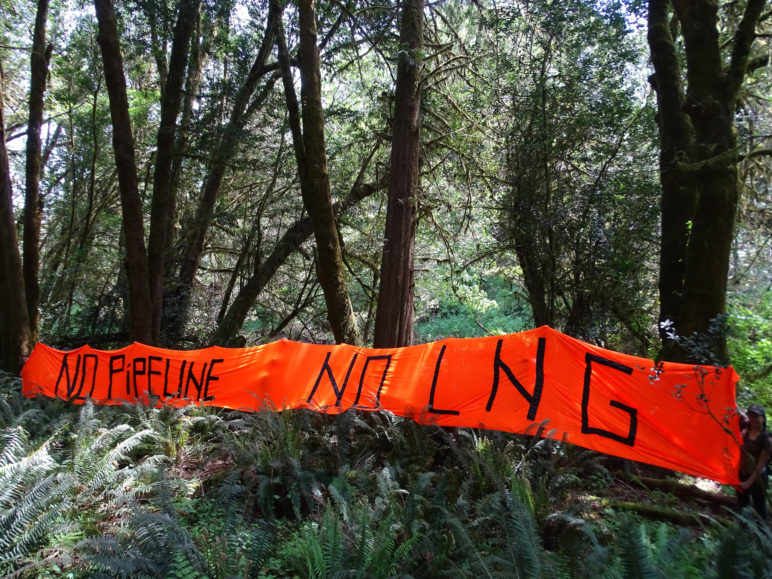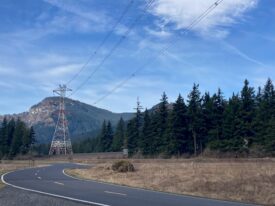If you’re desperate for good news about climate change, it helps if you have a sense of schadenfreude. Probably the merriest fossil fuel stories of 2019 show the fracking industry on the verge of a meltdown.
Despite a raft of accounting gimmicks, the industry wasn’t able to hide the fact that it was drowning in red ink. By mid-year, Sightline’s Clark Williams-Derry reported that:
A cross-section of 29 fracking-focused oil and gas companies reported more than $2.5 billion in negative free cash flows in the first quarter of 2019. These results were even worse than in the fourth quarter of 2018…
And as the year went on, the frackers’ problems kept getting worse. By December, the oil and gas giant Chevron was forced to write down its assets by more than $10 billion, with industry analysts widely accepting that dozens of other companies in the sector would face a similar reckoning.
Whatever financial pain the industry is facing, though, looks like a flesh wound compared to the injury it has inflicted on the rest of us—and our environment. As Chevron tried to put on a brave face for investors, researchers at Stanford University dispelled the characterization of natural gas as a necessary “bridge fuel” to clean energy. Quite the opposite:
A surge in natural gas has helped drive down coal burning across the United States and Europe, but it isn’t displacing other fossil fuels on a global scale. Instead, booming gas use is fueling the global growth in greenhouse gas emissions, according to a new study by researchers at Stanford University and other institutions.
In fact, natural gas use is growing so fast, its carbon dioxide emissions over the past six years actually eclipsed the decline in emissions from the falling use of coal, the researchers found.
Consider also the grim news that came in December, when the National Academy of Sciences reported that a new satellite-based methane analysis determined that a single gas well blowout in Ohio last year was one of the largest methane leaks in US history. The New York Times reported:
The blowout, in February 2018 at a natural gas well run by an Exxon Mobil subsidiary in Belmont County, Ohio, released more methane than the entire oil and gas industries of many nations do in a year, the research team found. The Ohio episode triggered about 100 residents within a one-mile radius to evacuate their homes while workers scrambled to plug the well.”
The Ohio blowout released more methane than the reported emissions of the oil and gas industries of countries like Norway and France, the researchers estimated. Scientists said the measurements from the Ohio site could mean that other large leaks are going undetected.
When you sign up for fracking—”shale gas development,” as the industry likes to have it—that’s what you should expect. Not often, but not never.
Even when methane is not gushing skyward from ill-conceived fracking operations, it’s a persistent menace. As Sightline’s Tarika Powell explained in her three-part series on the topic, methane is like carbon dioxide on steroids. The whole notion of using gas a bridge fuel is alarmingly deceptive and understanding how methane works is a critical component of any coherent climate policy.
This year was also the year when the human and economic costs of fracked gas became abundantly clear. A suite of new expert analyses showed definitively that fracking is a clear danger to public health—and a costly one.
In a journal article published in Nature this month, economists at Carnegie Mellon University demonstrated that the shale gas boom in the Ohio Valley was a wrecking ball for communities and climate, not just a bust. Sitting atop the gas-rich Marcellus and Utica shale formations, it is one of the most intensively fracked regions of the world. That geology yielded short term profits for industry while exacting a terrible price from the public in the region. For every three jobs created by the shale gas industry, someone’s life in Appalachia was cut short by a year. This from an industry already responsible for thousands of premature deaths. And the costs of air pollution from shale gas extraction exceeded the employment benefits by over $2 billion in the Ohio Valley, while the climate impacts add another $34 billion in estimated losses.
The findings were consistent with research published in May by economists at ECONorthwest who studied the costs of fracking in Pennsylvania. They found that the annual costs of fracking in the Keystone State are roughly $1.5 billion per year—the equivalent of 0.3 percent of the state’s GDP. If fracking there continues at current rates, they calculated that the costs would rise to $54 billion over the next 20 years. And that’s not even counting a whole range of costs that their study could identify, but not monetize. The true cost would add in cancer, cardiac conditions, occupational hazards, groundwater contamination, seismic activity, and much more.
Medical professionals did study all those destructive side effects in 2019 though, and they issued a grim prognosis. In a December paper published in the New England Journal of Medicine, four of the nation’s top public health experts warned about the dangers of gas, finding that: “gas is associated with health and environmental hazards and reduced social welfare at every stage of its life cycle.” They link it ground and surface water contamination, air pollution, radiation release, ecological damage, earthquakes, and on and on.
The Oregon and Washington Physicians for Social Responsibility reached much the same conclusion. In their hefty May 2019 report, they found: “the fracking process degrades the environment of surrounding communities through toxic contamination of air and water with hundreds of chemicals with known associations to cancer, heart and lung disease, developmental disorders, and poor pregnancy outcomes.”
These findings are in line with those of the national Physicians for Social Responsibility, which published a new sixth edition of a compendium report on fracked gas. Reviewing more than 1,700 peer-reviewed studies and independent reports, they concluded that 84 percent found health harms related to fracking—and there is no evidence that fracking can operate without threatening public health directly or without imperiling climate stability upon which public health depends.
If 2019 was the year when the arguments in favor of fracked gas fell apart, 2020 will be the year when we have to start making tough decisions. Despite Washington Governor Jay Inslee’s opposition to several new fracked gas projects, the industry is still planning rapid expansion in the region. In fact, Cascadia’s gas industry got a late-year boost when the Puget Sound Clean Air Agency gave a green light to a new liquefied natural gas (LNG) facility in Tacoma, over the objection of the Puyallup Tribe. Still outstanding are final decisions about a giant LNG export project in Coos Bay, Oregon, and a huge gas-to-methanol refinery in Kalama, Washington, both of which have fallen far behind schedule.
As 2020 unfolds, communities across Cascadia will determine their stance on fracked gas. But to date, even relatively modest community proposals—simply stopping the buildout of more new gas-delivery infrastructure—are met with outrage by the industry and developers alike.
With clear evidence about the menace fracked gas represents and with an industry falling apart economically, we should ring in the new year emboldened to stand our ground.










James Williams
Could you please make this article available in an emailable format? I would like to send it to policy makers.
James Williams
Laurie Parkinson
You can email it, James – see the letter symbol above. Or maybe that has been added since you wrote your comment.
C
With the impending shutdown of coal plants in the Pacific Northwest, there will be a perceived electric resource adequacy problem. See https://www.ethree.com/e3-projects-substantial-capacity-shortfall-in-the-pacific-northwest/ for the wonky details. There are videos by the Northwest Power Pool as well; start at https://vimeo.com/354085917.
There will be a significant push by the old guard staff at electric utilities for new natural gas peaker plants in order to meet this capacity shortage. Those of us who understand that new natural gas plants are a terrible disaster, economically and socially and environmentally, will need to push very hard at multiple levels of policy-making to ensure that more sensible solutions are implemented instead.
We can meet our resource adequacy needs with a combination of (among other things) new storage, renewable generation, highly efficient heat pumps, and shifting of electric load to off-peak hours, but the old guard has not fully internalized the much lower overall lifetime cost of these solutions. In their defense, the rapidly decreasing cost of all of these solutions is a very recent development, and utilities are slow-moving entities. We need to educate and persuade the decision-makers.